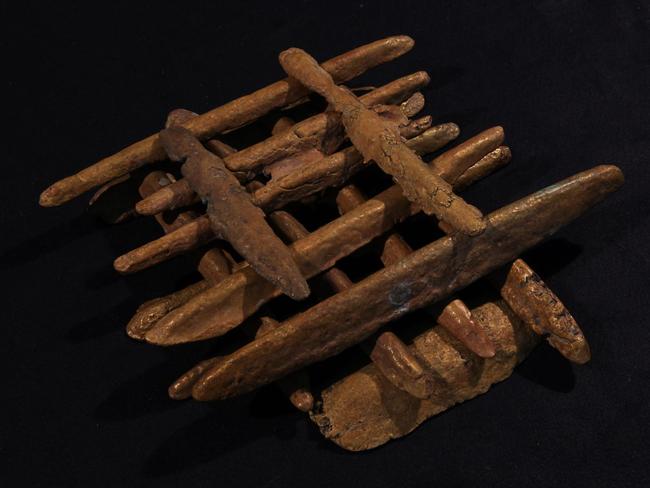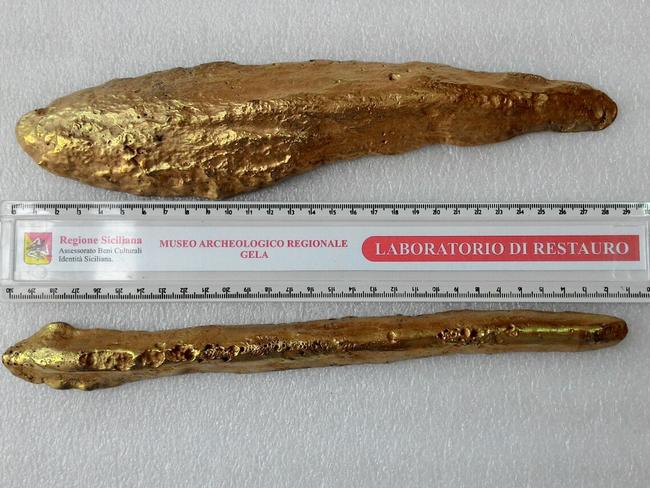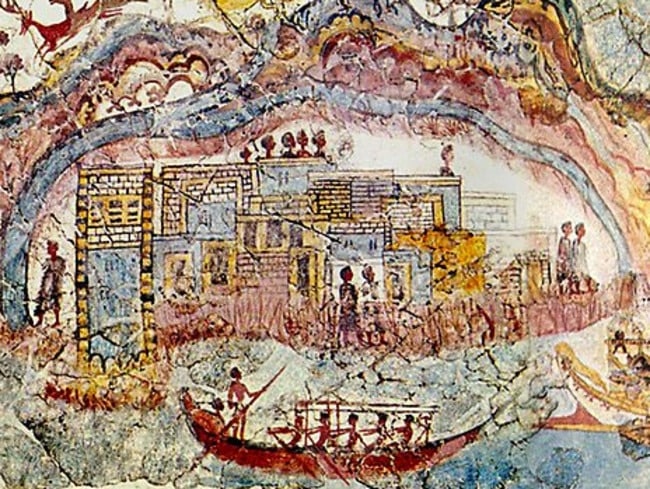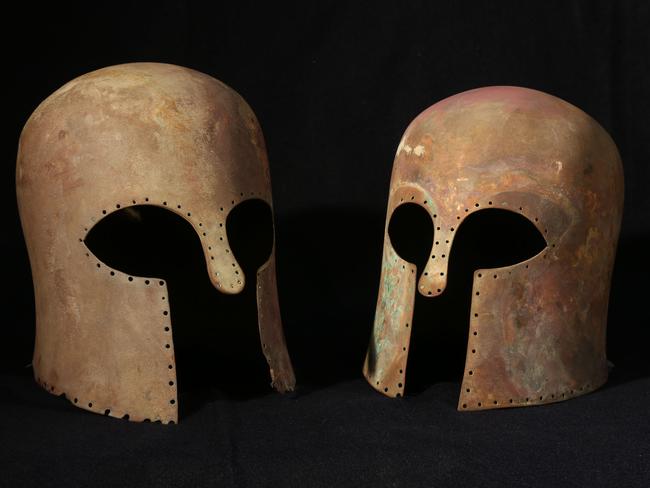Possible Orichalcum Found in Ancient Shipwreck off the Coast of Sicily
Mysterious metal ingots, believed to be linked to the mythical civilization of Atlantis, have been discovered in an ancient shipwreck off the coast of Sicily. Archaeologists recently retrieved numerous ingots made of an unusual golden alloy from the shipwreck, which is located approximately 300 meters off the coast of Gela in southern Sicily and sank around 2600 years ago. The excavation also yielded two Corinthian war helmets and containers that were once used to store precious scented oils. However, it is the rough lumps of metal, still exhibiting red and gold hues after being submerged for two millennia, that have generated immense excitement in the archaeological community. These ingots may potentially be orichalcum, the fabled lost metal of Atlantis. The metal’s existence was brought back to reality in 2014 with the discovery of the shipwreck off the coast of Sicily, and in 2015, 39 roughly-cast lumps of the unusual red-gold metal were recovered from the seabed. In a recent dive, divers uncovered an additional 47 ingots from the muddy depths of the shipwreck, further adding to the remarkable find.
The archaeologists working on recovering the wreck say it went down within sight of safety.
“The ship dates to the end of the sixth century BC,” Sicilian archaeologist Sebastiano Tusa told Seeker.
“It was likely caught in a sudden storm and sunk just when it was about to enter the port.”
This rules out Atlantis. Plato, writing in the 4th Century BC, implies that the legendary city slipped beneath the waves many hundreds — perhaps thousands — of years earlier. Archaeologists believe the ship was exporting the orichalcum from Greece or Asia Minor.
Given its precious cargo, it may not have had an easy voyage.
“The presence of helmets and weapons aboard ships is rather common. They were used against pirate incursions,” Tusa said.
Also recovered was an anchor, remains of amphorae and several smaller containers used for carrying precious oils. The shipwreck, and that of another two nearby, are yet to be fully excavated. Tusa told La Repubblica that protecting the wrecks remains a concern, with looters believed to be exploiting a lack of policing of the archaeologically rich waters.
Orichalcum has been linked to the mythical land of Atlantis, which may itself have been a distorted memory of an ancient Minoan palace on the island of Santorini, destroyed in the eruption of a volcano about 1590 BC.
The red-hued orichalcum alloy was long regarded to be a myth mentioned only in passing in Ancient Greek tales by the likes of Hesiod in the 8th Century BC and Plato in the 4th Century BC. One legend states it was invented by the legendary first king of Thebes, Cadmus, and was said to be regarded as being only slightly less precious than gold.
Plato lauded the glistening metal’s properties, and attributed it to Atlantis:
“For because of the greatness of their empire many things were brought to them from foreign countries, and the island itself provided most of what was required by them for the uses of life. In the first place, they dug out of the earth whatever was to be found there, solid as well as fusile, and that which is now only a name and was then something more than a name, orichalcum, was dug out of the earth in many parts of the island, being more precious in those days than anything except gold.”
He went on to say the metal was used to give the interior of the temple of Poseidon, at the heart of Atlantis, a magical glow.
“The zones of earth were surrounded by stone walls of divers colours, black and white and red, which they sometimes intermingled for the sake of ornament; the outermost wall was coated with brass, the second with tin, and the third, which was the wall of the citadel, flashed with the red light of orichalcum.”
Exactly what it was, and what it was made of, was a matter of speculation.
Cleaned of
Hits: 0





